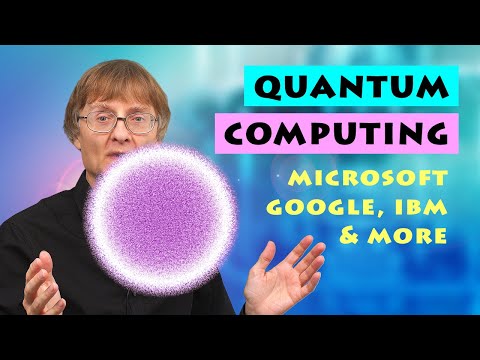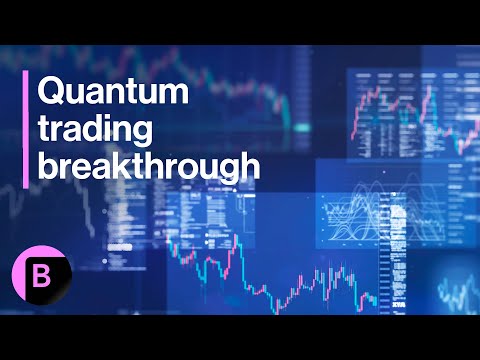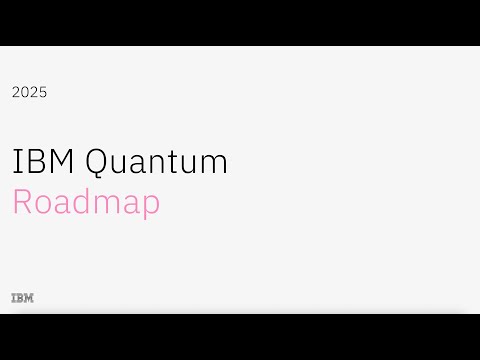Quantum Computing in 2025: The Year Physics Meets Profit
Beyond Qubits: How 2025 Became the Turning Point Where Quantum Theory Transformed Into Commercial Reality
🎯 Quick Verdict: The State of Quantum Computing in 2025
The quantum revolution isn’t coming—it’s here. 2025 has emerged as the watershed moment when quantum computing shifted from laboratory curiosity to commercial imperative. Google’s Willow chip breakthrough in late 2024, demonstrating exponential error reduction as qubit count increases, has fundamentally changed the game. We’re no longer asking “if” quantum computers will be practical, but “when” and “for what applications first.”
The numbers tell the story: quantum technology funding surged to nearly $2 billion in 2024, with governments pledging an additional $10 billion in early 2025. McKinsey’s latest Quantum Technology Monitor projects the total market could reach $97 billion by 2035. Meanwhile, companies like IBM, IonQ, and D-Wave are moving beyond proof-of-concept to deliver measurable quantum advantage in specific applications.
The reality check: We’re still years away from universal quantum computers replacing classical systems. However, 2025 marks the transition from “quantum curiosity” to “quantum utility”—with early adopters in finance, pharmaceuticals, and cryptography already deploying quantum solutions for real-world problems.
🏆 Key Players & Market Positioning in 2025
The quantum computing landscape has consolidated around several key architectural approaches, each with distinct advantages and commercial strategies. Here’s how the major players stack up in 2025:
| Company | Technology Approach | Key Metrics (2025) | Commercial Focus | Notable Achievement |
|---|---|---|---|---|
| Google Quantum AI | Superconducting qubits | 105 qubits (Willow), sub-threshold error correction | Research partnerships, cloud access | First below-threshold quantum error correction |
| IBM Quantum | Superconducting qubits | 1000+ qubit roadmap, Heron processors | Enterprise quantum network, consulting | Quantum advantage target by end-2026 |
| IonQ | Trapped ion | $82-100M revenue guidance (2025) | Cloud computing, enterprise applications | Room temperature operation, high fidelity |
| D-Wave | Quantum annealing | 5000+ qubits (Advantage system) | Optimisation problems, logistics | First commercial quantum computer |
| Quantinuum | Trapped ion | 50+ logical qubits (Helios, 2025) | Quantum software, applications | Leading logical qubit performance |
| Rigetti Computing | Superconducting qubits | Real-time error correction breakthrough | Quantum cloud services, hybrid computing | Low-latency quantum error correction |

Comparison infographic showing quantum processor architectures: superconducting circuits (Google/IBM), trapped ions (IonQ/Quantinuum), and quantum annealing (D-Wave) systems side by side.
🚀 Major Breakthroughs in 2025: The Timeline That Changed Everything
December 2024: Google’s Willow Chip
The breakthrough that started it all. Google’s Willow quantum chip achieved the holy grail of quantum computing: exponential error reduction as qubit count increases. The 105-qubit processor performed calculations in 5 minutes that would take classical supercomputers 10 septillion years—a number exceeding the age of the universe.
January 2025: Japan’s $7.4 Billion Quantum Commitment
Japan announced the largest national quantum computing investment in history, signaling government confidence in commercial viability. This funding aims to establish Japan as a quantum superpower by 2030.
March 2025: IBM’s Quantum Advantage Roadmap
IBM projected first quantum advantage demonstrations by end-2026, moving beyond theoretical benchmarks to practical problem-solving applications in chemistry and optimisation.
June 2025: McKinsey’s $97 Billion Market Projection
The Quantum Technology Monitor 2025 revealed quantum technologies could generate up to $97 billion globally by 2035, with quantum computing capturing $28-72 billion of that market.
September 2025: HSBC’s Quantum Finance Breakthrough
HSBC announced successful deployment of quantum computing for portfolio optimisation and risk analysis, marking one of the first commercial quantum applications in financial services.
October 2025: China Opens Commercial Quantum Computer
China launched commercial access to its 105-qubit superconducting quantum computer, intensifying global quantum competition and demonstrating the technology’s maturation.
💼 Real-World Applications: Where Quantum Computing Works Today
The question is no longer whether quantum computers will be useful, but where they deliver value first. Based on current deployments and announced partnerships, several sectors are experiencing genuine quantum advantage in 2025:
🏦 Financial Services: Risk & Portfolio Optimisation
Financial institutions are the earliest adopters of quantum computing technologies. HSBC’s recent breakthrough in quantum-powered portfolio optimisation demonstrates measurable improvements in risk assessment and trading strategies. JP Morgan, Goldman Sachs, and other major banks are investing heavily in quantum algorithms for:
- Portfolio optimisation: Quantum algorithms can process vastly more variables simultaneously
- Risk analysis: Monte Carlo simulations run exponentially faster on quantum systems
- Fraud detection: Pattern recognition in financial transactions
- High-frequency trading: Quantum advantage in option pricing models
🧬 Drug Discovery & Molecular Simulation
Pharmaceutical companies are leveraging quantum computing’s natural ability to simulate quantum systems—like molecular interactions. Nature published research in 2024 demonstrating a hybrid quantum computing pipeline for real-world drug design problems.
“Quantum computers excel at simulating quantum systems because they operate using the same fundamental principles. This gives them a natural advantage in molecular simulation tasks that are intractable for classical computers.”— Nature Scientific Reports, 2024
Key applications include:
- Protein folding prediction: Understanding disease mechanisms
- Drug-target interaction: Faster pharmaceutical development
- Chemical catalyst design: More efficient industrial processes
- Personalised medicine: Quantum-enhanced genomic analysis
🔐 Cybersecurity & Cryptography
The looming threat of “Q-Day”—when quantum computers can break current encryption—is driving massive investment in quantum-safe cryptography. The quantum communication market alone is projected to reach $11-15 billion by 2035.
Quantum communication market size in 2024
Government share of quantum security purchases
Projected CAGR for quantum communication
⚡ Energy & Materials Science
Quantum computers are uniquely suited to optimising complex systems with many variables—perfect for energy grid management, battery chemistry optimisation, and renewable energy forecasting.

⚠️ Challenges & Limitations: The Reality Behind the Hype
Despite remarkable progress, quantum computing in 2025 still faces significant technical and practical challenges. Understanding these limitations is crucial for realistic expectations about quantum computing’s timeline and applications.
🔬 Quantum Error Correction: Still the Biggest Hurdle
While Google’s Willow chip achieved below-threshold error correction—a historic milestone—practical quantum computers still require millions of physical qubits to create thousands of reliable logical qubits. Current systems are in the “Noisy Intermediate-Scale Quantum” (NISQ) era, where errors limit computational depth.
📊 Current Error Rates vs. Requirements
Current state (2025): Best systems achieve ~0.1% error rates per gate operation
Required for practical applications: ~0.0001% error rates per gate operation
Progress needed: 1000x improvement in error rates or sophisticated error correction overhead
❄️ Infrastructure Challenges
Most quantum computers require extreme operating conditions:
- Temperature: Superconducting qubits operate at 15 millikelvin (-273.135°C)
- Isolation: Systems must be shielded from electromagnetic interference
- Calibration: Constant recalibration required due to quantum drift
- Cost: Quantum computers cost millions and require specialized facilities
💰 The Talent & Cost Barriers
The quantum computing industry faces a severe talent shortage. Universities worldwide are producing fewer than 1,000 quantum computing PhDs annually, while industry demand exceeds 10,000 positions. This talent gap is constraining commercial deployment.
“The biggest challenge isn’t building better quantum hardware—it’s finding people who understand how to program and apply these systems to real problems.”— Quantum computing industry executive, 2025
🎯 Application Specificity
Unlike classical computers, which are general-purpose machines, current quantum computers excel only at specific problem types. Most business applications still require hybrid quantum-classical approaches, adding complexity and cost.
🤖 Interactive Section: Try These Quantum Computing Prompts
Want to explore quantum concepts further? Use these prompts with ChatGPT, Claude, or Google Bard to deepen your understanding:
“Explain quantum superposition using a simple analogy that doesn’t involve Schrödinger’s cat. Then show me how this principle gives quantum computers their advantage.”
“Compare the error correction approaches used by Google’s Willow chip versus IBM’s latest quantum processors. What are the trade-offs between surface codes and other quantum error correction methods?”
“I run a financial services company. Create a decision framework for evaluating whether quantum computing could benefit our portfolio optimisation, risk modeling, or fraud detection processes in the next 3-5 years.”
“Analyze the quantum computing investment landscape. Which companies are best positioned for the transition from NISQ-era to fault-tolerant quantum computing, and what should investors watch for?”
💡 Pro Tip: Ask follow-up questions about specific quantum algorithms (Shor’s algorithm for cryptography, Grover’s algorithm for search, VQE for chemistry) to understand how quantum advantage emerges in different applications.
🔮 Future Predictions: Quantum Computing 2026-2030
Based on current research trajectories, funding patterns, and technological progress, here’s what industry experts predict for quantum computing’s next phase:
📅 2026: The Quantum Advantage Year
- IBM’s quantum advantage demonstrations in chemistry and optimisation problems
- First commercial quantum software IPOs as pure-play quantum companies mature
- Major pharmaceutical partnerships announce quantum-designed drug candidates
- Quantum internet prototypes connect quantum computers across continents
📅 2027-2028: Enterprise Adoption Accelerates
- Quantum-as-a-Service platforms reach $1 billion in annual revenue
- Post-quantum cryptography standards become mandatory for government contractors
- Hybrid quantum-AI systems demonstrate breakthrough performance in machine learning
- First quantum-enhanced consumer applications appear in smartphones and cloud services
📅 2029-2030: The Fault-Tolerant Transition
- First fault-tolerant quantum computers with 1000+ logical qubits
- Quantum simulation breakthroughs in climate modeling and materials science
- Major economic disruption in industries dependent on computational advantage
- Quantum workforce development programs produce 50,000+ quantum-literate professionals annually
❓ Frequently Asked Questions
They won’t. Quantum computers are designed for specific computational tasks, not general computing. Classical computers remain superior for most everyday tasks like word processing, web browsing, and media consumption. Think of quantum computers as specialized tools, like supercomputers, rather than replacements for personal devices.
Both perspectives contain truth. The transformative potential is real—demonstrated by Google’s Willow breakthrough and increasing commercial deployments. However, much media coverage oversells near-term capabilities. The reality: quantum computing will transform specific industries and applications over the next decade, but won’t revolutionize all computing overnight.
Yes, but not immediately. Current quantum computers cannot break RSA or other public-key cryptography. However, cryptographically relevant quantum computers could emerge in the 2030s. The good news: post-quantum cryptography standards are already being developed and deployed. Organizations should begin transitioning now.
Several options exist: (1) Public companies: IBM, Google (Alphabet), Microsoft, IonQ (NYSE: IONQ), Rigetti (NASDAQ: RGTI); (2) Quantum-focused ETFs and funds; (3) Private quantum startups through accredited investor platforms; (4) Indirect exposure through companies using quantum computing (pharmaceutical, financial services). Remember: this is a high-risk, long-term investment sector.
Three main paths: (1) Quantum physics/engineering: PhD in physics, quantum information, or electrical engineering; (2) Quantum software: Classical programming skills plus quantum algorithms knowledge; (3) Quantum business: Domain expertise in applications (finance, chemistry, optimization) plus quantum literacy. Many universities now offer quantum computing courses and certificates.
🎭 Final Reflection: Beyond the Quantum Hype Cycle
Quantum computing in 2025 occupies a fascinating position between revolutionary potential and practical reality. We’ve moved decisively past the “peak of inflated expectations” into what Gartner would call the “slope of enlightenment”—where genuine applications emerge alongside realistic limitations.
The most profound shift isn’t technical but cultural: quantum computing is no longer the exclusive domain of physicists and computer scientists. Financial analysts, pharmaceutical researchers, and cybersecurity professionals are becoming quantum-literate out of necessity, not curiosity.
The strategic imperative for organizations: You don’t need to become a quantum computing company, but you need to understand how quantum computing might affect your industry. The companies that thrive in the 2030s will be those that identified quantum opportunities—and limitations—in the 2020s.
Perhaps most importantly, 2025 has demonstrated that quantum computing’s value lies not in replacing classical computation but in augmenting it. The future belongs to hybrid systems that combine the reliability of classical computing with the unique capabilities of quantum processors.
As we look toward 2026 and IBM’s projected quantum advantage demonstrations, one thing is certain: the age of practical quantum computing has begun. The question is no longer whether quantum computers will be useful, but how quickly we can develop the applications, algorithms, and expertise to harness their power.
The quantum revolution isn’t coming—it’s here, it’s practical, and it’s accelerating.



